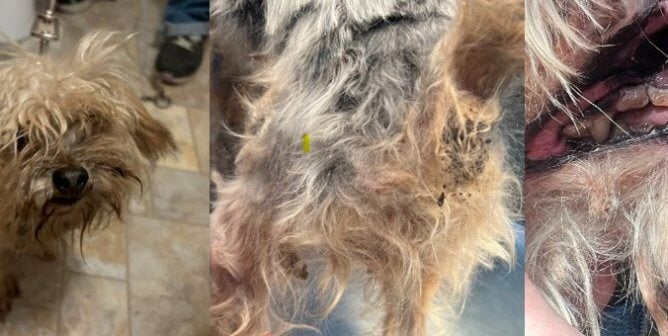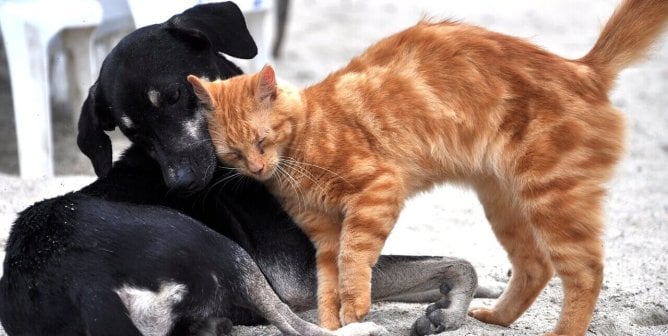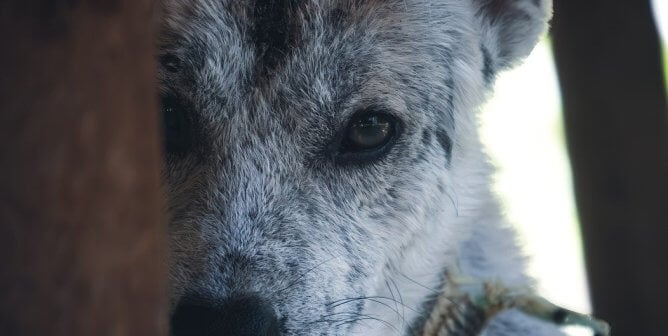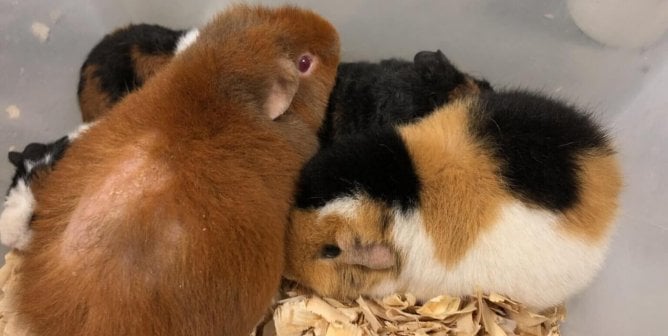Captured or Captive Bred Birds
There is no such animal as a “cage bird.” All caged birds were either captured or captive-bred. No bird was born to be in a cage. In the wild, these beautiful beings are never alone, and if they are separated for even a moment, they call wildly to their flockmates. They preen each other, fly together, play, and share egg-incubation duties. Many bird species partner for life and share parenting tasks.
Unfortunately, the brilliant colors, speech capabilities, and intelligence of these animals has made them the third-most popular animal companion in the United States, with an estimated 20 million birds confined to cages in homes across the country.1 As a result, many birds do not get the mental stimulation or companionship that they need, and normal bird behaviors—such as flock-calling, biting, chewing, and throwing food—are often unwelcome to unprepared human guardians. The result may be abandoned or isolated birds who, as The Washington Post reported, “lose their minds.”2
Breeding for Profit
In the late 20th century, the popularity of keeping birds as companions resulted in a smuggling business based in Central America. It proved devastating to wild bird populations, and many birds who were caught died during transport or soon after.3 The Wild Bird Conservation Act stemmed the flow of birds into the U.S., although it is still a problem in other countries.4 A zoologist at Texas A&M told National Geographic, “In the United States, if you go buy a parrot, the odds of it being captive bred are 99 percent, (but) if you’re in Peru, Costa Rica, or Mexico, the chances of it being wild caught are 99 percent.”5 Australian ornithologist Joseph Forshaw estimates that for every wild-caught bird that survives transport to a cage, “at least 10 die”, but breeding operations have perpetuated the myth that baby birds will grow up to become great companions and have also helped perpetuate consumer demand.6 Just as there are puppy mills for dogs, there are bird factories, where breeders warehouse hundreds or thousands of nondomesticated birds for their offspring.
To a “breeder,” a bird is a commodity to be placed with a “mate” to reproduce and is seldomly—if ever—allowed out of the nest box. Birds who are returned to breeders because of behavioral problems are often kept as “breeding stock,” thus perpetuating the problem behaviors in future generations, as birds are bred for color, not for temperament. Birds do not have to be kept in healthy, hygienic conditions or fed high-quality food to produce eggs. Typically, eggs are removed and incubator-hatched, and babies are hand-fed special formulas. Egg removal signals the female to produce another egg, and another, and another … eventually ruining her health by depleting her body of much-needed calcium and increasing her risk of becoming egg-bound, a condition that is nearly always fatal.
Even in low-profit enterprises, most birds live in small cages, surrounded by the frightening sounds of many unfamiliar birds. A bird who cannot choose his or her own partner may become depressed, especially if separated from a previous partner. Birds forced to cohabitate in small quarters with a “mate” who is not of their choosing may also become aggressive. The frustration and confusion that they experience after being thrust into a cramped environment with a “stranger” is often displayed as “mate aggression,” in which the male mutilates or even kills his female companion.
Enslaved and Stressed
Unlike domesticated dogs and cats, captive-bred birds are only a few generations removed from their wild ancestors, so many of their natural behaviors do not mesh well with human companionship. Birds are meant to fly and be with others of their own kind. Considering that some parrots fly 30 miles per day in the wild, it’s no wonder that confinement can cause birds to have temper tantrums and mood swings.7 Birds can also be mischievous and highly destructive. In the wild, they typically play in the treetops and chew on branches or leaves. In captivity, birds display this behavior by chewing on walls, door moldings, electrical or telephone wires, furniture, or any other material that they can get to. “Screaming” is really a bird’s way of calling out to flockmates who, in the wild, might be half a mile away. Punishing birds only increases their frustration and makes them more unruly, as they do not understand that their natural behaviors are not welcome in a human home environment. One researcher who spent time in Australia and Indonesia observing wild lorikeets stated, “Parrots are the primates of the bird world …. They are not content to sit on a perch and sing. They actively want to go and manipulate objects all the time.”8
Birds imported from the wild are often frightened and high-strung, and both hand-raised and wild-caught birds often become neurotic, pulling out feathers and mutilating themselves, sometimes to the point of death. When they are ready to breed, many species naturally pluck some feathers to prepare for nest-building and egg-sitting, but when humans interfere with their natural behaviors and disrupt biological and instinctual cycles by imprisoning birds, plucking becomes a destructive compulsion. Plucking can also be caused by physical problems, such as malnutrition or allergies.
Hand-raised birds crave affection and companionship, human or nonhuman, and sometimes do not like to let their human companions out of their sight. They don’t understand the separation that occurs when their humans go to work or, worse, on vacation. Birds interpret the disappearance of a partner or companion as trouble and may think that they are vulnerable to predators. These fears can compromise birds’ immune systems, and they may succumb to sickness or death.
What You Can Do
For more information on the trafficking of wild birds and other animals, please read our factsheet on the exotic animal trade. Refuse to stay at resort hotels that keep caged birds as “decorations.” Let your travel agent and the hotel managers know that you will not support this cruelty.
Never buy a bird from a pet store or buy companion-animal supplies or food from stores that sell birds. If you or people you know already have birds and are unable to provide them with companionship and space to fly, please consider taking one of the following actions:
- Find out if there is a bird sanctuary or large indoor/outdoor aviary (or an outdoor one in a very warm climate) where you can place the bird. Ideally, you should place birds with members of their own species. Check the climate, opportunities for mating and privacy, and other key factors.
- If you cannot find a reputable sanctuary, consider placing the bird with someone who has other birds of the same species, allows them to live in a free-flight situation, and will never separate them once they have bonded. Also, make sure that they frequently visit a board-certified avian veterinarian and do not breed birds.
If you wish to keep the bird, find a companion bird of the same or similar species. A list of avian rescue organizations can be found at Avian Welfare Coalition. Check shelters, humane societies, animal rights groups, newspapers, and nursing homes—some birds can live for more than 80 years, often outliving their human companions.9
Many people do not want to get another bird because they are afraid that the first bird won’t pay enough attention to them anymore. If the bird does pay less attention to his or her human friends, it just proves how starved for same-species attention he or she was. Two birds can actually be easier to care for than one—with the companionship of another bird, they may be less disruptive and destructive. When the birds have become friends, you can be comforted by the fact that they have each other’s company when you are not home.
The following tips will help keep birds healthy, calm, and contented:
- Before introducing a new bird, take him or her to an avian veterinarian for a checkup. If the newcomer is in good health and free of diseases, put his or her cage inside the larger flight enclosure so that the birds can see each other. Watch to see how they get along. If they seem friendly to each other, open the door of the small cage after a week. The newcomer will come out when he or she feels comfortable enough. Leave this cage in place, with the door open, for as many days as the newcomer may want to use it as a safe place—until he or she totally abandons it. Until you’re absolutely sure that the birds have bonded, don’t leave them alone or in a situation where one cannot get away from the other. Do not assume that these two birds will definitely become friends. Be prepared to house the birds separately if they do not bond.
- Let the birds fly free for long periods of time every day—spending as much time out of the cage as possible. Convert your balcony or porch into an aviary or build a good-weather aviary in your back yard, if possible. Otherwise, provide a “bird-proof” room or rooms, with no ceiling fans or other bird hazards. Include a bird “gym” or nonpoisonous tree branches (such as dogwood, apple, or elm) for exercise.
- Ideally, birds should get about 12 hours of sleep a night, preferably from dusk on, in a draped flight enclosure or a covered cage.(9)
- Eliminate hazards like ceiling fans, pots of water, open toilet bowls, electrical wires, large glass windows and mirrors, places where birds could become stuck, etc.
- The fumes emitted by overheated nonstick cookware and self-cleaning ovens are deadly to birds—never use them in a home with birds. Use ecologically safe products—no strong cleaners, aerosols, artificial air fresheners, or insecticides. If your apartment complex demands that you make your apartment available to an exterminator, you can legally refuse for “health reasons.”
- Keep food and water containers above perches, high enough so that they do not get soiled with droppings. Containers that have become soiled should be cleaned immediately. Some birds dunk food in their water, and those water containers should be cleaned at least twice a day to prevent bacterial growth. Vitamins should never be administered through the water unless the containers can be thoroughly cleaned every couple of hours, as this encourages bacterial growth.
- Wild birds don’t live on seeds alone, so you shouldn’t condemn your companion bird to such a bland and nutritionally inadequate diet either. Offer a variety of fruits and vegetables along with grains, nuts, cooked beans, and seeds. Birds have tremendously fast metabolisms and cannot go without food for long. Different species have different nutritional needs, so it’s imperative that you read up on your bird or consult with a veterinarian. Malnutrition accounts for more than 90 percent of the health problems of companion birds.11 Birds need the proper combination of vitamins, minerals, and amino acids to remain healthy. A good supplement can help, although a variety of the proper foods should meet all your birds’ needs. Please consult a qualified avian veterinarian for further information on birds’ natural diets and how you can mimic them
- Never provide grit for your birds. This supplement is marketed as an aid to digestion and contains calcium. Grit is not found in the wild and has no place in a bird’s diet, as it can mineralize in the gizzard and cause crop impactions. Fresh organic vegetables such as broccoli and spinach should be offered instead.
- Make sure that your plants are not poisonous to birds. Common plants that are toxic if birds ingest them include English ivy, philodendron, azaleas, and holly. A good avian veterinarian can provide you with an extensive list.
- Provide shallow containers or a birdbath filled with water. Some birds like to be sprayed with water from a spray bottle; others love taking showers in the bathtub. After your birds bathe, keep them away from drafts until their feathers dry.
- Nail trims may be necessary but can often be avoided by providing cement swings and perches. Beak trims should not be needed unless there is an underlying health problem. Chewing on toys is necessary and good for birds—an overgrown beak requires a trip to a good avian veterinarian.
- Provide numerous bird-safe toys for chewing and playing, including clean, nonpoisonous wood. Companion-animal supply companies sell suitable wooden bird toys.
For more information on keeping birds as companions, please visit the Avian Welfare Coalition’s Web site at avianwelfare.org.
References
1American Pet Products Association, “Pet Industry Market Size & Ownership Statistics,” 2017-2018 APPA National Pet Owners Survey, accessed 17 Feb. 2019.
2Laura LaFay, “Bye-Bye Birdie, Parrots’ Demands Often Prompt Owners to Take Flight,” The Washington Post 27 Aug. 2001.
3Frantz Dantzler, “Smaller Birds Most Adaptable to Cages,” South Bend Tribune 27 Aug. 2002.
4Ibid.
5Christine Dell’Amore, “Have Parrots Become Too Popular for Their Own Good?” National Geographic, Jun. 2018.
6Claudia Dreifus, “A Passion for Parrots and the Fight to Save Them in the Wild, The New York Times 5 Sep. 2006.
7Dantzler.
8Mira Tweti, “Plenty to Squawk About; Exotic Birds Emerged as the Fastest-Gowing Pet Choice in the ’90s. Now Abandoned Parrots Fly Wild Throughout Southern California. Why Polly Needs Better Protection,” Los Angeles Times 20 Jul. 2003.
9Dell’Amore.
10Andrew U. Luescher, D.V.M., Ph.D., ed., Manual of Parrot Behavior (Ames: Blackwell Publishing Professional, 2006) 60.
11E.R. Bennett, DVM, “What to Feed Your Pet Bird,” Chicago Exotics Animal Hospital, accessed 17 Feb. 2019.








